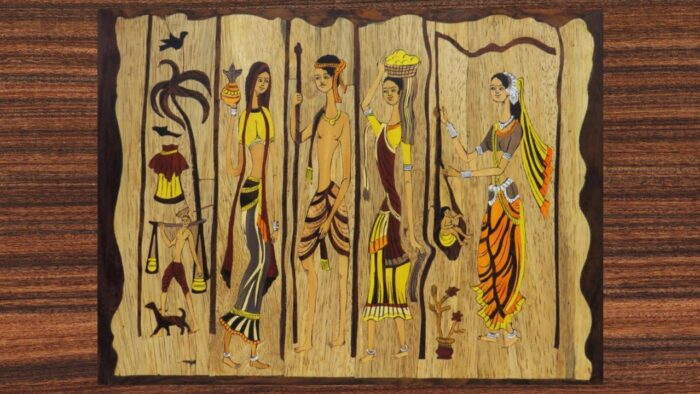The word Tamaala is representative of indigenous art forms across the world because of its connect to the earth and nature. In India, it is an evergreen tree and is also the botanical name of the Bay leaf tree (Tej Patta). For native Indians of America it is a common name for a girl child and is a blue-green tree.
Tamāla (तमाल) is the name of a tree found in maṇidvīpa (Śakti’s abode), according to the Devī-bhāgavata-purāṇa (Tamala, Tamāla: 23 definitions (wisdomlib.org)). Accordingly, these trees always bear flowers, fruits and new leaves, and the sweet fragrance of their scent is spread all over in this place. The trees (e.g. Tamāla) attract bees and birds of various species and rivers are seen flowing through their forests carrying many juicy liquids.
It is a Sanskrit word, identified with Cinnamomum tamala (Indian bay leaf) by various scholars in their translation of the Śukranīti. This tree is mentioned as having thorns, and should therefore be considered as wild. The King was told to place such trees in forests (not in or near villages).
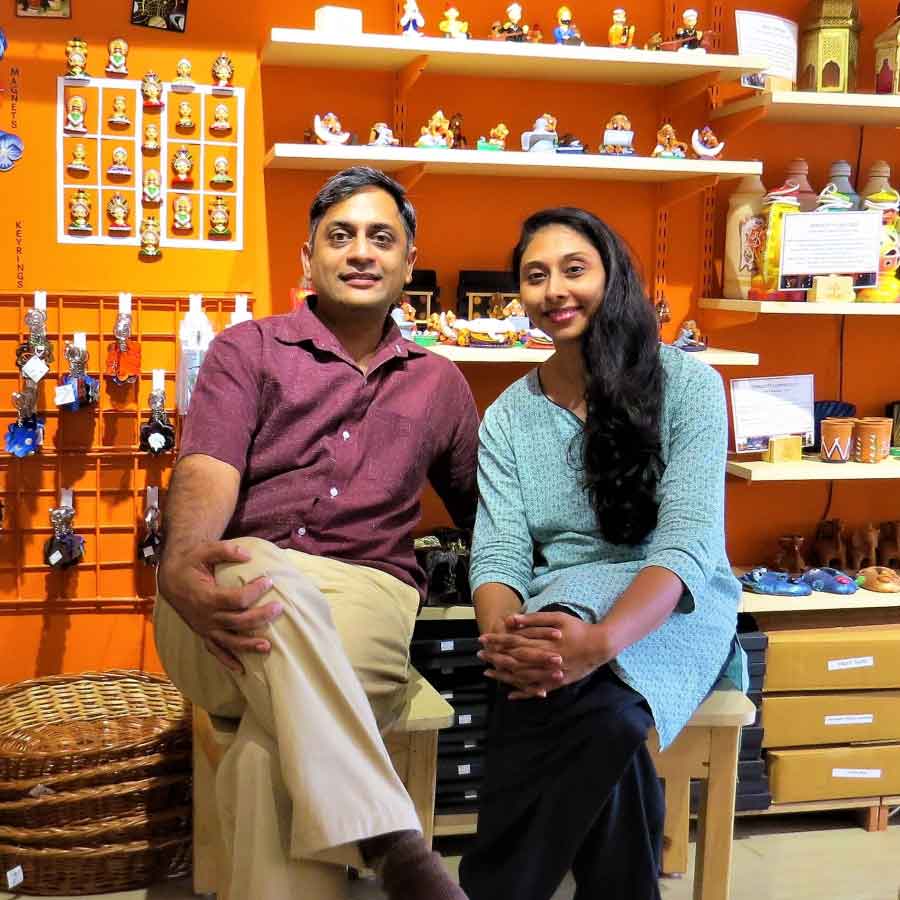
The Tamaala Art Gallery in South Bangalore was founded by Vinay Prashant and his wife Suvarna Kamakshi in 2015. They were recipients of an Indica fund recently for their Terracotta Mobile Amplifier Project, which supported artists post-pandemic.
Vinay says that the inspiration for the name for them, comes from the Gita Govinda (Lord Krishna is said to have grown up under the forest of Tamaala trees) and the tree is also mentioned in the Kanakadhara Sthotram.
Their website says that “deep respect for all things handmade and an unending sense of wonderment at the richness of India's Arts and Crafts were the most important factors leading to the birth of Tamaala (in 2015). Add to this the dwindling state of traditional handicrafts and the struggles of the Indian Artisan, and we had more than enough reason to start something to improve this situation.”
In an interview for Indica, Vinay says that their business is an attempt to bring back the rural artisans to their traditions by creating more sources of revenue, furthering their sustenance and therefore, reviving the art/ craft form.
Says Vinay, “several handmade forms are under threat, we can look no further than Karnataka for stark examples - Kinhal toys from the Koppal region is a vanishing craft form. We have worked with the artisans occasionally - they suffer from too much work - and too little manpower (barely 20 artisans practising the craft).”
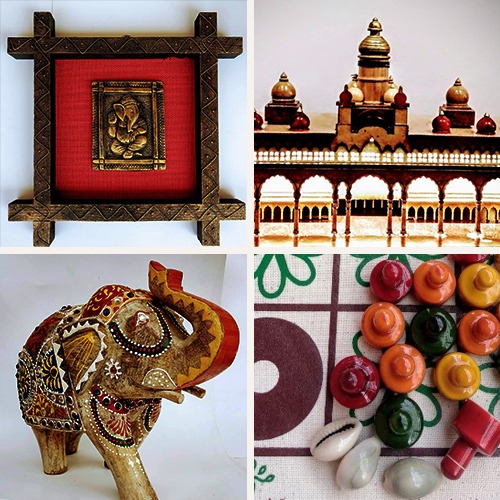
Currently Tamaala is working with 160 + rural artisans from 15 out of 72 regions in India. The artisans are from 39 craft and art clusters. “We have mostly come up various artisans in our traves and work. After having visited them in the rural surroundings.” Asked how Indian products can compete with foreign products in the toys and games sector, Vinay says we need to make a few major distinctions while classifying toys and games. “Top of Form Bottom of Form Electronic toys vs. Non-electronic (parents are moving towards the latter and the imported ones are electronic). Traditional games vs. regular board games. The former helps bring families together since the grandparents mostly know all the rules and helps children in spatial thinking etc – during the lockdown this helped relieve stress. Handmade vs. Machine Made –the consumer is far more aware of the distinction and difference now and they value the handmade far more than they used to earlier - hence the market is also larger now.”
During the pandemic, Tamaala worked on design innovation to sell unique products like the TMAP (Terracotta Mobile Amplifier Project) and the CMAP (Channapatna Mobile amplifier Project) and on the entire traditional games series. The Terracotta mobile amplifiers are made by potters in Channapatna. Starting as a post-pandemic project, the Terracotta amplifier has created livelihoods for rural potters from 3 craft clusters - Channapatna, Narayanpura, and Magadi. The amplification is significant for an acoustic instrument. It is available in earthy natural colour with hand-painted motifs.
Tamaala is assisting artists reinvent their products to suit modern markets and also upgrade their skills through Design Intervention. “We do this through discussions with artisans - we also mix artisans from different clusters to create new products. Design student projects help bringing in fresh perspectives in clusters. Expose artisans to our end consumers through workshops so that they understand consumer tastes etc,” says Vinay.
Tamaala helps artists bring out highly research based traditional games, which are mostly multi-cluster in their income generation impact. During the pandemic and soon after, the organisation has helped reverse migration and what this means in the art world is that the younger generation is going back to learning and working on traditional inherited art.
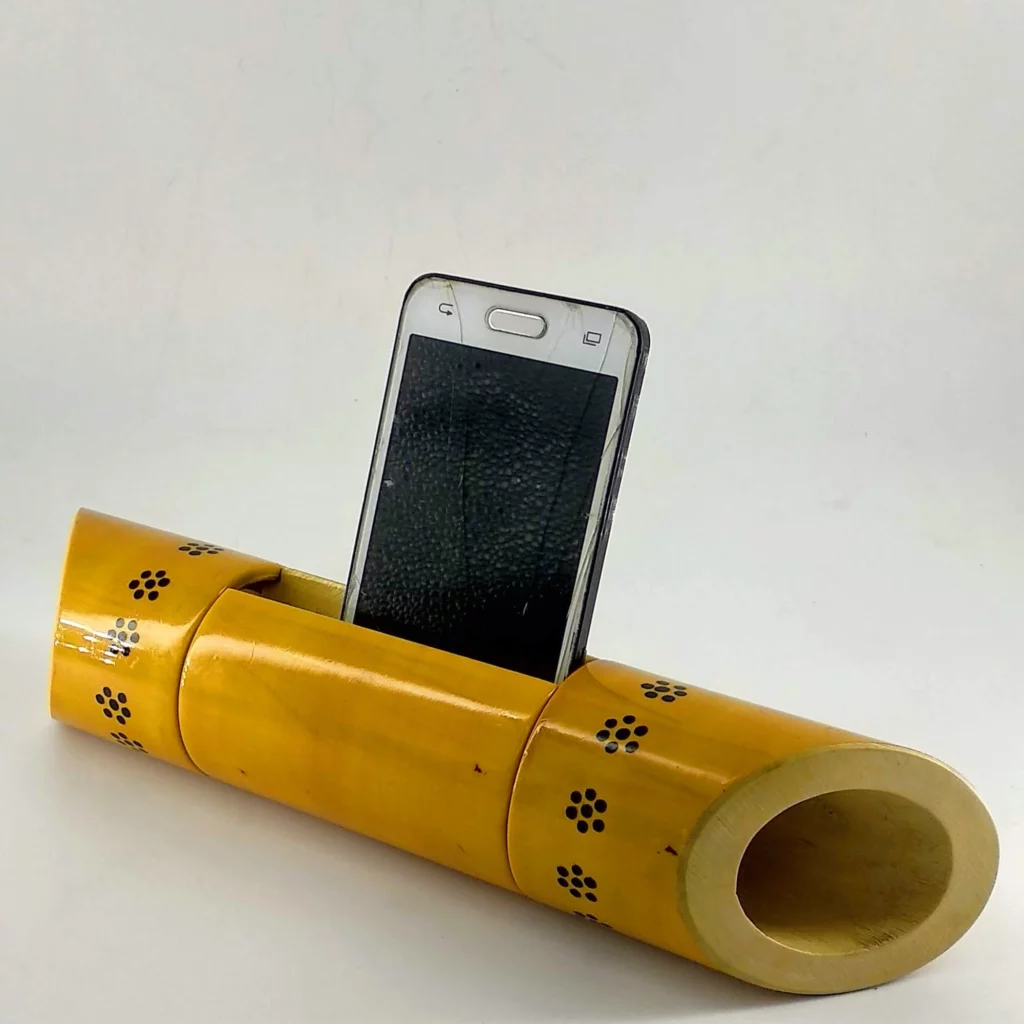
Giving examples he quotes one example of a traditional artisan family from Channapatna. The young son returned jobless from Saudi Arabia and couldn’t find work in India. Vinay says, “Now the natural question in the reader's mind would be - why would he not work with his father and help him in his craft work. That brings me to the next point - most of the artisans who educate their children, educate them away from their traditional art. This happens similarly unfailingly and in 90% of such artisan families. They feel that an artisan’s work is not for the educated child, they have a brighter future - jobs in the city, marriage into a good family and a house & car, maybe.”
The father works with Tamaala’s chief artist co-creating designer candles, toys and almost 50% of their Channapatna collection. “He started asking us for more work as he desperately needed to make up for his son’s unemployment. We ramped up our requirements from him. But it was certainly not enough to feed another family, the sales of these being seasonal - there was a limit to how much we could pre-make.”
In order to help the family, Tamaala came up with the option of the son helping the father at marketing his ware, by approaching the Cauvery Handicrafts director for stall options in the Mysore Palace campus and at the Cauvery handicrafts emporium. This allowed the family to secure a little more income.
In another case, a potter family of five members from near Jigni village helped Tamaala in their Eco friendly Ganesha project. Vinay says in one year they made about 2000 Ganeshas which created livelihoods for about 32 potters overall. Both their children wanted to be in cities or go abroad. But seeing how Tamaala helped his family, one of the sons started helping his family make the Ganesha idols. “We’ve noticed that the younger generation not only brings a higher energy level into the making process but their education enables them to do things more systematically improving productivity for the family - this was clearly demonstrated by his involvement.”
Tamaala also works with a few tribal artists from the Gond region. In one family with 3 children, who were all reputed artists, but one wanted to move to do a degree in engineering and the other brother wanted to move to the city to support the family.
Tamaala helped in the daughter’s wedding and also sold paintings which the family sent to them. But they still needed more backing. “To help out we got into a long term engagement with the remaining family members, sending them advance money for art works they could send us later. This helped a bit and the elder brother decided not to move to the city and look for a job. We had also planned an extensive workshop in Bangalore with all the three members teaching their art forms over a three week period. This was for wall murals as well as canvas and paper art,” says Vinay.
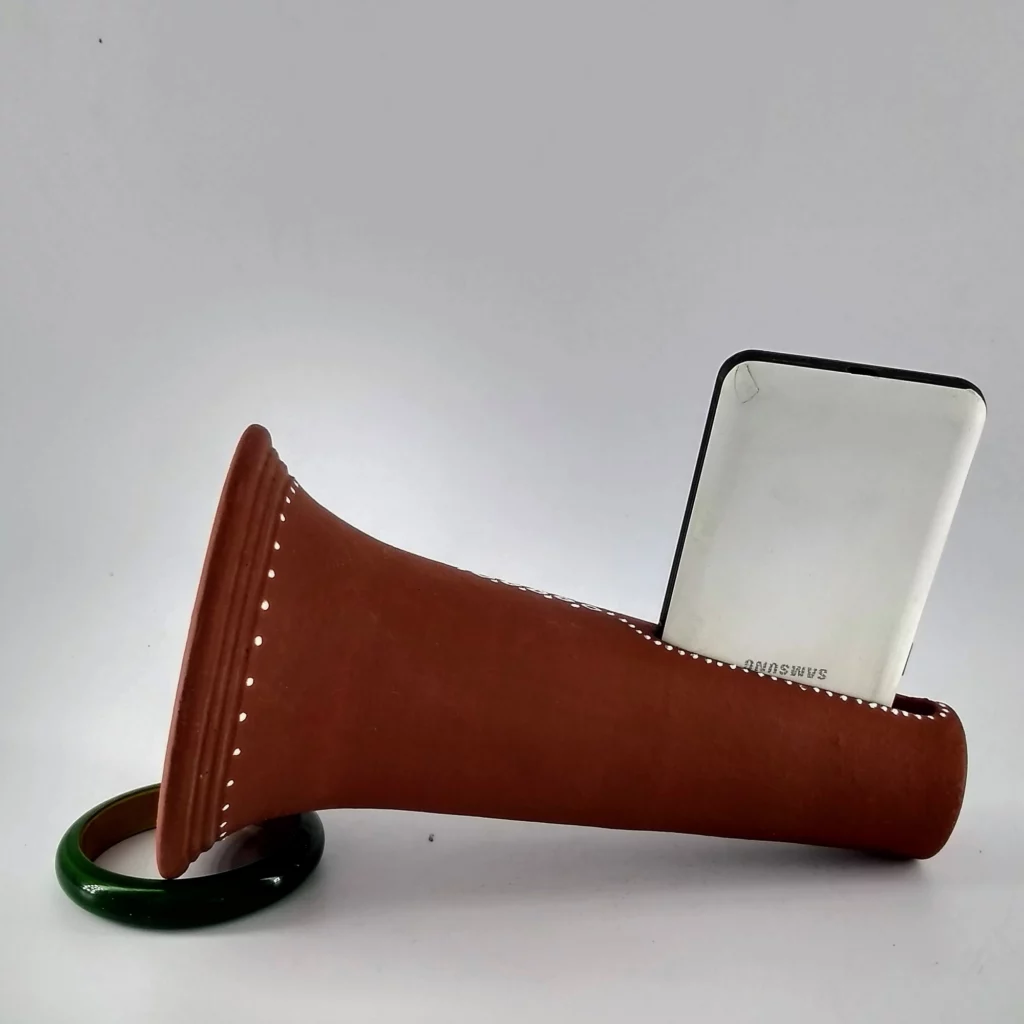
He adds that at about the same time the DC of that region saw these artisans work on one of his village tours and “gave the elder son an opportunity to create wall murals in all the district government buildings, all for a good sum of money, and he almost gave him a recurring contract where he would be engaged for at least six months of the year. So, though disappointed slightly with the cancellation of our workshop idea, we were quite happy seeing the family come upon good times, finally.”
Tamaala is supporting the artists who bring to life Indian culture with their hands and imagination. From the textures they use, to the colours and ideas, they create an idea of India that is centuries old and needs to be preserved.

